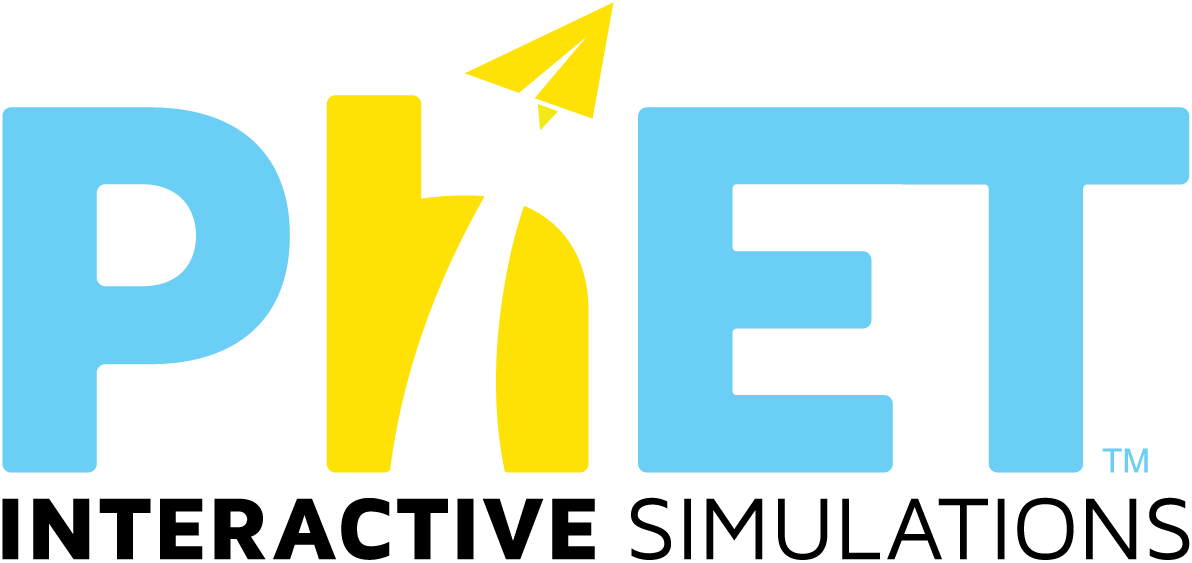184 搜尋結果符合 elementary charge
模擬教學
- Alpha 衰變
- Area Builder_周長與面積 (HTML5)
- Area Model Decimals_面積模型與小數 (HTML5)
- Area Model Introduction_面積模型介紹 (HTML5)
- Area Model Multiplication_面積模型與乘法 (HTML5)
- Arithmetic_算數 (HTML5)
- Balancing Act_平衡動作 (HTML5)
- Balloons and Static Electricity_氣球和靜電引力 (HTML5)
- Bending Light_光的折射 (HTML5)
- Build a Fraction_建立一個分數 (HTML5)
- Build An Atom_建立一個原子 (HTML5)
- Capacitor Lab:Basics_電容實驗室:基礎 (HTML5)
- Capacitor Lab 電容器實驗室
- Charges And Fields_電荷與電場 (HTML5)
- Concentration_濃度 (HTML5)
- Coulomb's Law_庫侖定律 (HTML5)
- Density_密度 (HTML5)
- Energy Forms and Changes_能量形式與轉化 (HTML5)
- Energy Skate Park: Basics_能量滑板競技場:基礎 (HTML5)
- Equality Explorer: Basics_探索等式:基礎 (HTML5)
- Expression Exchange_代數的表示法 (HTML5)
- Forces and Motion:Basics_力和運動:基礎 (HTML5)
- Fraction Matcher_分數的比較 (HTML5)
- Fractions: Equality_分數的介紹:等式 (HTML5)
- Fractions: Intro_分數的介紹 (HTML5)
- Fractions: Mixed Numbers_分數的介紹:帶分數 (HTML5)
- Friction_摩擦 (HTML5)
- Function Builder: Basics_函數:基礎 (HTML5)
- Gases Intro_氣體概念介紹 (HTML5)
- Geometric Optics: Basics_幾何光學:基礎 (HTML5)
- Gravity and Orbits_重力與軌道 (HTML5)
- Gravity Force Lab: Basics_萬有引力實驗室:基礎 (HTML5)
- Greenhouse Effect_溫室效應 (HTML5)
- John Travoltage_約翰屈伏塔 (HTML5)
- John Travoltage
- Magnets and Electromagnets_磁鐵與電磁鐵 (HTML5)
- Make a Ten_湊到 10 (HTML5)
- Masses & Springs 質量與彈簧
- Masses and Springs: Basics_質量與彈簧:基礎 (HTML5)
- Molecule Polarity_分子的極性 (HTML5)
- Molecule Polarity 分子極性
- My Solar System_我的太陽系 (HTML5)
- Natural Selection_天擇 (HTML5)
- Number Compare_比較數字 (HTML5)
- Number Line: Integers_數線:整數 (HTML5)
- Number Play_認識數目 (HTML5)
- Pendulum Lab_鐘擺實驗室 (HTML5)
- Projectile Motion_拋射運動 (HTML5)
- Proportion Playground_比例遊樂場 (HTML5)
- Quadrilateral_四邊形 (HTML5)
- Ratio and Propotion_比與比值 (HTML5)
- Rutherford Scattering_拉塞福散射實驗 (HTML5)
- Salts & Solubility 鹽類和溶解度
- States of Matter: Basics_物質三態:基礎 (HTML5)
- Sugar and Salt Solutions 糖與鹽水溶液
- Wave Interference_波的干涉 (HTML5)
- Waves Intro_波的介紹 (HTML5)
- 月球登陸器
- 冰川
- 估計
- 法拉第的電磁實驗室
- 信號電路
- 旅人
- 氣球和靜電引力
- 氣體特性
- 能量滑板競技場
- 迷宮遊戲
- Color Vision_彩色視覺 (HTML5)
- 發電機
- 飲食與運動
- 溫室效應
- 電荷輻射
- 電場
- 電場曲棍球
- Circuit Construction Kit: DC - Virtual Lab_電路組裝套件:直流電 - 虛擬實驗室 (HTML5)
- Circuit Construction Kit: DC_電路組裝套件:直流電 (HTML5)
- Magnet and Compass_磁鐵與羅盤 (HTML5)
- 瓢蟲在二維空間移動
- 聲波
- Membrane Transport (HTML5)
- Number Pairs (HTML5)
活動
- Moving Man, elementary
- Electrical Charge Lab
- Build an Atom
- How Can You Light A Bulb?
- Inquiry Based Modeling Static Electricity
- Charges and Fields Remote Lab Introduction to Static Electricity
- Coulomb's Law Lab
- Ladybug Motion in 3rd Grade
- Balloons and Static Electricity for Middle School
- Calculating the net charge of an atom/ion
- Colors, Bunnies and Wolves: does the strongest survive?
- Area Builder for grades 3-5
- Fraction Matcher Grades 3-5
- Eating and Exercise PhET: Body Systems grade 4-5
- Force and Motion Basics - Second grade
- Intro to Photoelectric Effect Interactive Lecture
- Introduction to Static Electricity using Electric Field Hockey and Charges and Fields (Inquiry Based)
- Electric Field Hockey Simulation Homework
- Elementary Pendulum Lab 4th-5th
- Mapping Electric Fields
- Interpreting Chemical Symbols
- Charge and Energy Conservation in Circuits Inquiry
- Electric Charge Basics
- Balloons and Static Electricity
- Describing Location and Movement
- Radioactive Decay
- Radioactive Decay - ILD
- Capacitor_Lab_Basics _html_Remote_lab
- Electric Fields & Point Charges
- Investigating Electric Fields
- Build an Atom - Guided-Inquiry Activity
- Capacitor Lab: Inquiry into Capacitor Design
- Building Fraction Sense Using “Fractions Intro PhET Simulation”
- Exploring Electric Charges
- Exploring the density of mysterious objects
- Float or Sink? An essay on the density of materials
- Build an Atom WebLab
- Heat or temperature
- Collecting and analyzing density data
- Comparing the properties of different materials
- Heat or temperature?
- High School Exploratory Lab for Balloons and Static Electricity
- Static Electricity
- Eating and Exercise Activity
- Geometric figures
- Activity in Electricity (Coulomb's Law)
- Electric Field Simulation Activity
- Electric Field and Potential Lab
- Salts and Solubility 5: Designer Salts (Inquiry Based)
- Exploring Electric Potential, Electric Field and Distance Relationships
- Balloons and Static Electricity | Remote Lab
- PhET Student Interactive Introduction on Capacitance & Dielectric Constants
- Electric Field and Electric Field Lines
- Capacitor Design Remote Lab
- Static Electricity Virtual Lab
- Electric fields
- C.A.S.T.L.E. Unit 2 Labs
- Charges and Charged Objects Investigation
- Electric Field Hockey Post Activity
- Electric Fields Simulation
- What Type of Light Bulb Should I buy for my Grandma?
- Measuring Current in a Series Circuit
- Electric Field Activity
- Atom Builder
- coulomb's Law
- Coulomb's law
- PhET activity guide
- Electric Field Hocket
- Charges & Fields PhET Lab
- Build an Atom, Isotope, & Ion
- Build an Atom: Introduction
- Force and Motion Sim Activity
- Energy Skate Park Basics: Énergie potentielle et cinetique
- (BNCC) Comparando as propriedades de diferentes materiais
- Build an Ion Inquiry Activity
- Coulombic Force Simulation Observations
- Static Electricity Lab!
- Build an Atom
- Homework Activity I
- Energy Forms and Changes
- Equipotential Surfaces Lab Activity
- Introduction to Electrostatics
- Determinine Electric Field Relationships
- 'Lectronic Plates
- Travoltage Lab
- Lab: PhET Build an Atom
- Chemistry - Introduction to Coulomb's Law
- Lab: Electric Field and Potential
- Charges and Fields Exploration
- The capacitance of a parallel-plate capacitor, effects of dielectric in a capacitor
- Electric field - patterns and strength
- Charging By Rubbing
- Capacitor and Dielectric 2
- PHET Charges and Fields Activity Part 1
- How do PhET simulations fit in my middle school program?
- Electric Field Lab
- Kirchhoff's Law
- Guided Inquiry - Electric Fields
- Playing with atoms
- MS and HS TEK to Sim Alignment
- Capacitor Lab: Basics: Inquiry into Capacitor Design
- Coulomb's Law Data Collection and Analysis (remote online learning)
- Computer Simulations as a Tool to Assist Teaching Basics of Electromagnetism (Simulações Computacionais Como Ferramenta Auxiliar ao Ensino de Conceitos Básicos de Eletromagnetismo)


